Top Lightweight AI Models for Edge Voice Solutions
Discover top small AI models for on-edge use that deliver real-time voice solutions with low latency, minimal memory, and high-quality speech synthesis.

Nityanand Mathur
Updated on
December 26, 2025 at 11:31 AM
Cloud-based voice AI has enabled everything from virtual assistants to customer support bots, but it’s not always the best fit for real-time, privacy-sensitive, or bandwidth-limited environments. Businesses operating in healthcare, retail, automotive, or IoT increasingly need voice processing to happen locally, directly on devices like kiosks, wearables, or edge servers.
That’s where lightweight AI models for edge deployment come in. These compact, efficient models are designed to run with limited computing power while delivering fast, reliable voice recognition and synthesis, no cloud dependency required.
In this guide, we explore the top small AI models built for edge voice applications. You’ll learn what makes them unique, how they compare, and what to consider when deploying them in real-world environments where speed, security, and efficiency matter most.
Understanding Small AI Models for On-Edge Use
Small AI models for on-edge use are specifically engineered to run directly on devices with limited processing power, memory, or energy resources, rather than requiring data to be sent to cloud servers for analysis. These models are designed with a reduced number of parameters, often under one billion, compared to their cloud-based counterparts, which can have hundreds of billions of parameters.
The architecture of such models focuses on rapid inference with minimal resource consumption. This enables real-time voice recognition, synthesis, or command processing on everyday hardware found in smartphones, smart speakers, or enterprise devices. For example, a small AI model might be trained to recognize spoken commands or generate speech locally, without external connectivity.
Key features of small AI models for on-edge use include:
Local processing: Data remains on the device, supporting privacy and reducing exposure to network vulnerabilities.
Low latency: Voice responses are generated almost instantly, as data does not need to travel to a remote server.
Resource efficiency: Models operate within strict memory and power budgets, making them suitable for mass deployment.
Scalability: These models can be deployed across thousands of devices without exponential increases in infrastructure costs.
In practical terms, small AI models for on-edge use allow enterprises to deploy advanced voice capabilities, such as real-time customer support, voice authentication, or multilingual interactions, directly on their own hardware. This approach supports compliance with data residency laws and reduces ongoing operational expenses.
The drive for smarter, faster voice technology is fueled by a handful of influential companies. These leaders not only push technical boundaries, but also show how businesses can put new capabilities to work.
Key Players in Lightweight AI Models for Voice Applications
Voice technology is no longer the domain of industry giants alone; a new wave of innovators is redefining what’s possible at the edge. These forward-thinking organizations are making advanced voice experiences accessible, practical, and secure, often where others see limitations.
1. Smallest.ai Lightning V2
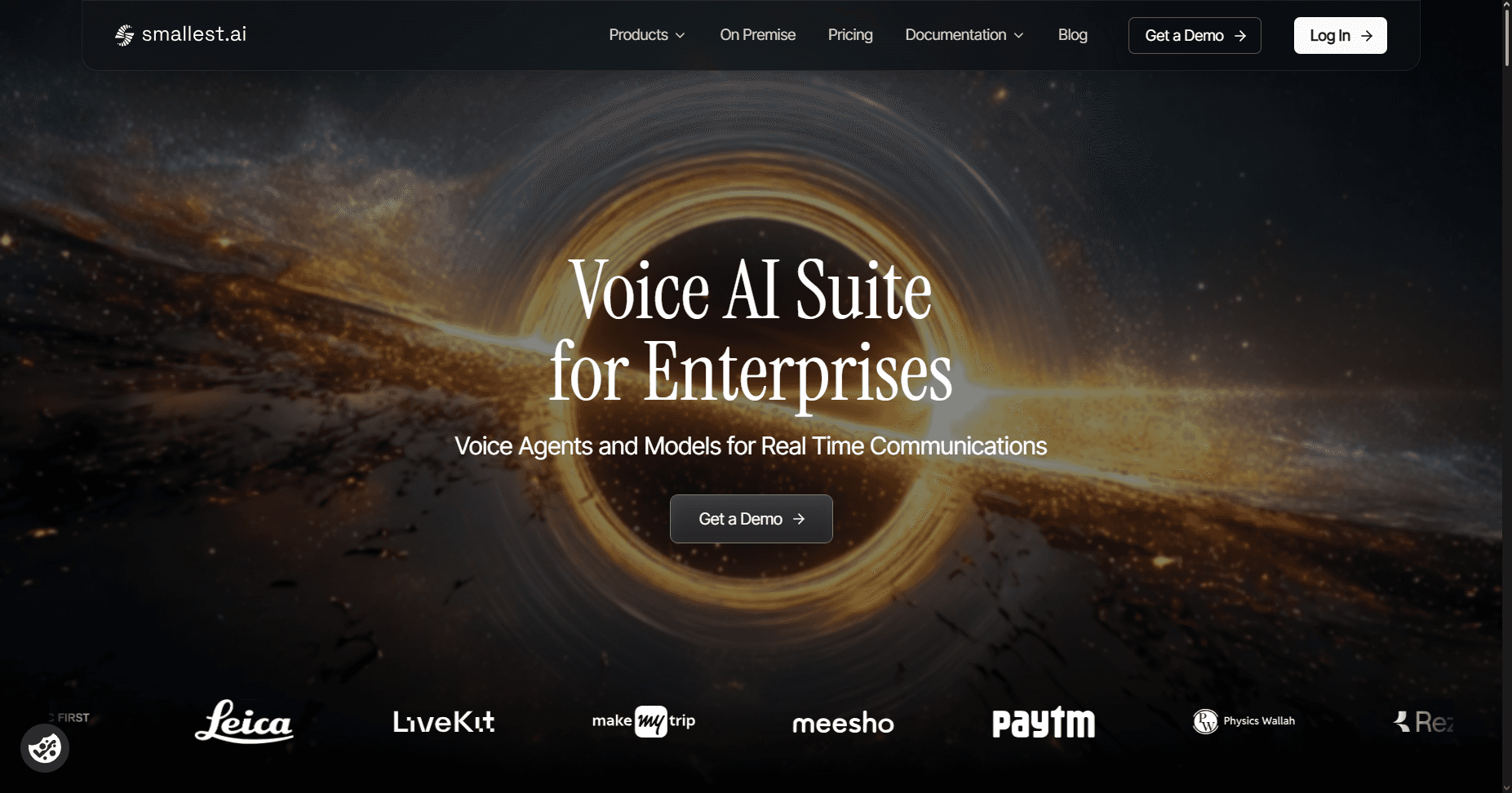
Source: smallest.ai
Smallest.ai’s Lightning V2 stands out for its compact architecture, rapid deployment, and high-fidelity voice output. The model is engineered to deliver hyper-realistic, multilingual speech at a fraction of the latency and hardware requirements of its competitors, making it suitable for real-time applications in customer service, virtual assistants, and interactive platforms.
Features:
Streaming latency as low as 100ms, enabling real-time voice interactions.
Voice cloning from just 10 seconds of reference audio, supporting unique brand voices and regional localization.
Multilingual support for 16+ languages, with natural inflections and accent customization.
Deep customization options for emotion, age, and accent.
Secure deployment with SOC 2 Type II, HIPAA, and PCI compliance for enterprise use.
2.ElevenLabs Flash V2
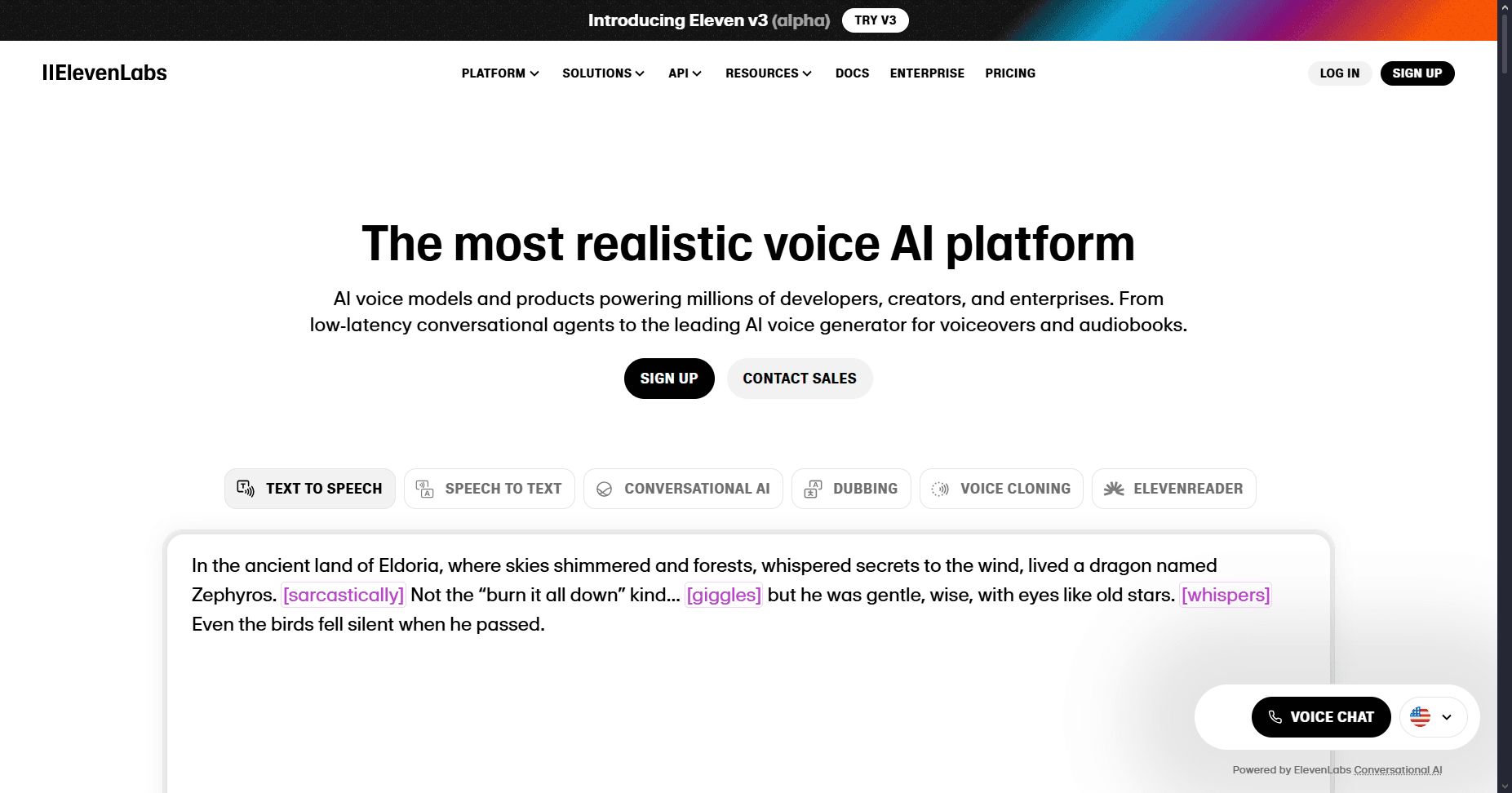
ElevenLabs Flash V2 is designed for scenarios demanding swift, natural speech generation. It balances low latency (75ms) with high-quality audio output, making it a strong fit for interactive voice agents, gaming, and live applications.
Features:
Ultra-low latency (75ms) for real-time streaming.
Supports 30+ languages and dialects, maintaining consistent voice characteristics.
API-based deployment for rapid integration into commercial products.
Not open source; access is controlled via licensing.
3. Telnyx Voice AI
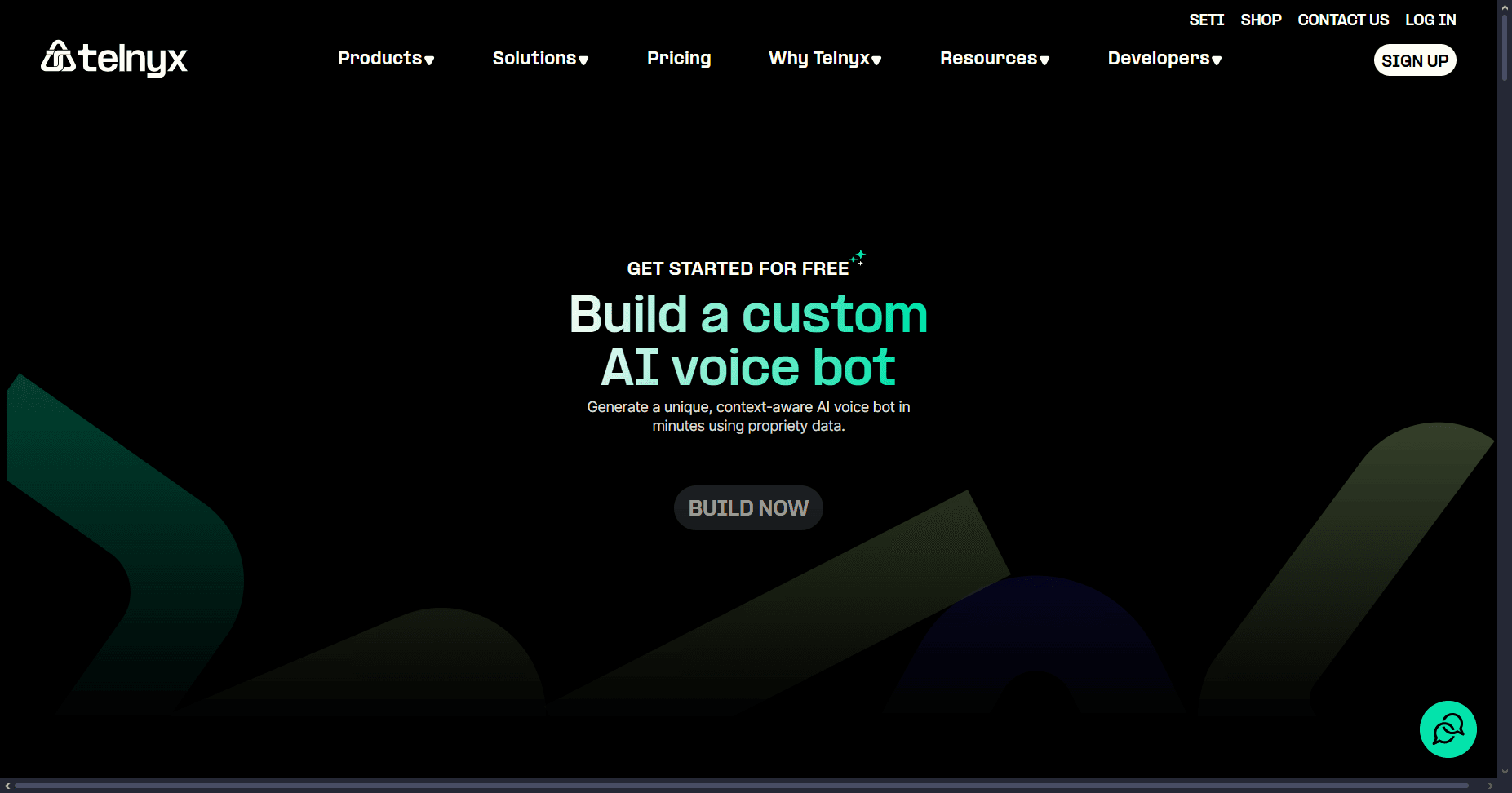
Telnyx Voice AI is a commercial solution targeting enterprise-grade conversational automation. It integrates AI-driven voice synthesis with a global private IP network to deliver real-time, human-like voice experiences for customer support and sales automation.
Features:
Real-time, streaming voice synthesis for instant responses.
Combines voice infrastructure, AI automation, and connectivity in a single stack.
Used for automated customer support, intelligent IVR, and outbound engagement.
Commercially licensed, not open source.
4. LOVO Genny

Genny by LOVO is a cloud-based TTS platform focused on high-quality, expressive voice output for content creation, e-learning, and marketing. It supports asynchronous processing and a broad selection of voices and languages, accessible via API.
Features:
Wide range of voices and styles for diverse use cases.
Asynchronous audio generation, suitable for batch content production.
API-driven integration for commercial workflows.
Closed-source, only available via LOVO’s platform.
5. Deepgram Aura-2
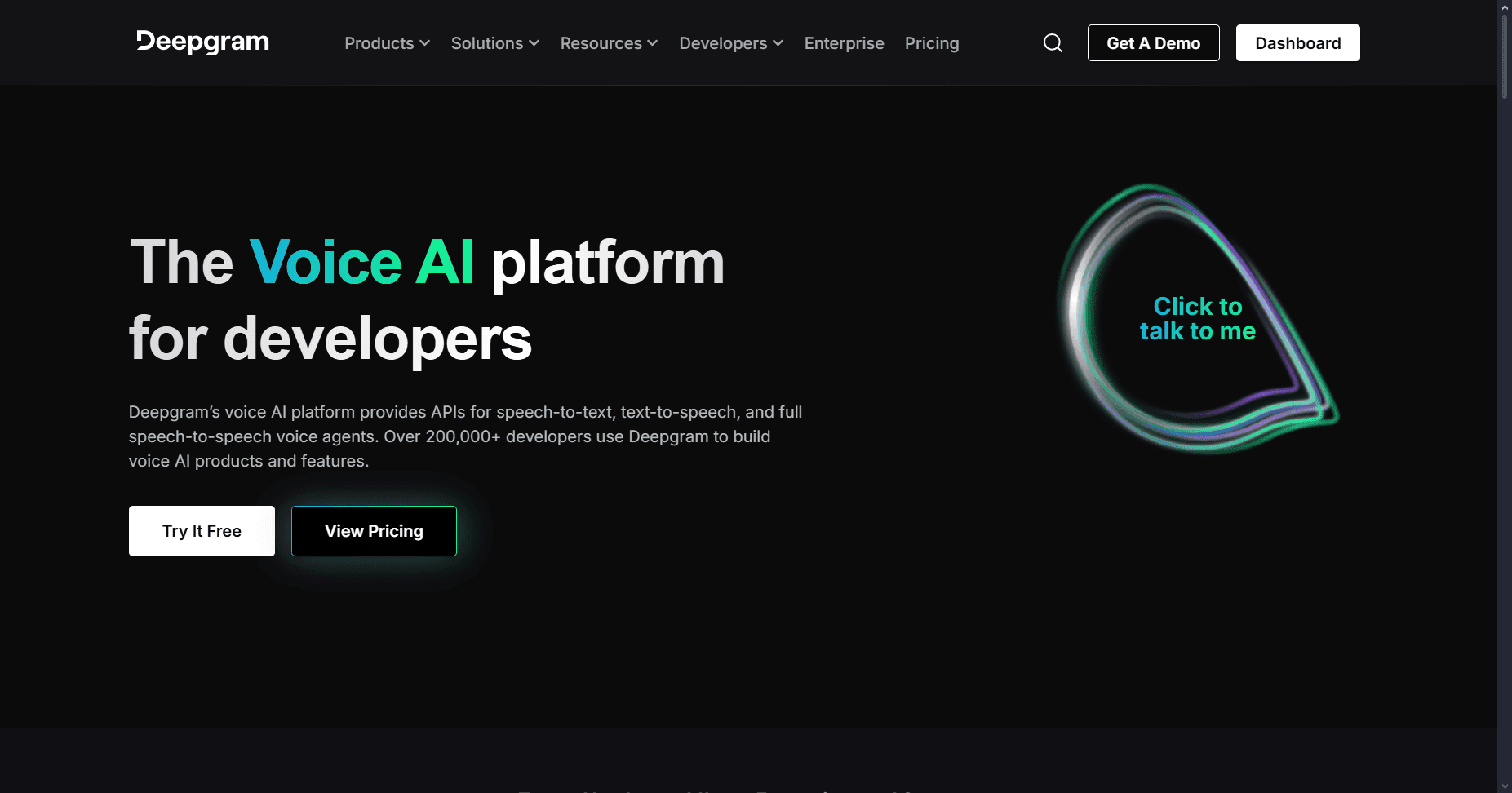
Deepgram Aura-2 is a next-generation, enterprise-grade text-to-speech (TTS) model designed specifically for real-time, high-throughput business applications rather than entertainment or offline content.
Features:
Sub-200ms time-to-first-byte (TTFB) for interactive deployments.
40+ curated voices with telephony-tuned prosody.
On-prem or cloud deployment for data residency and compliance.
Integrated with Deepgram’s STT for smooth voice workflows.
Pay-as-you-go pricing with enterprise discounts.
6. PlayHT Sonic
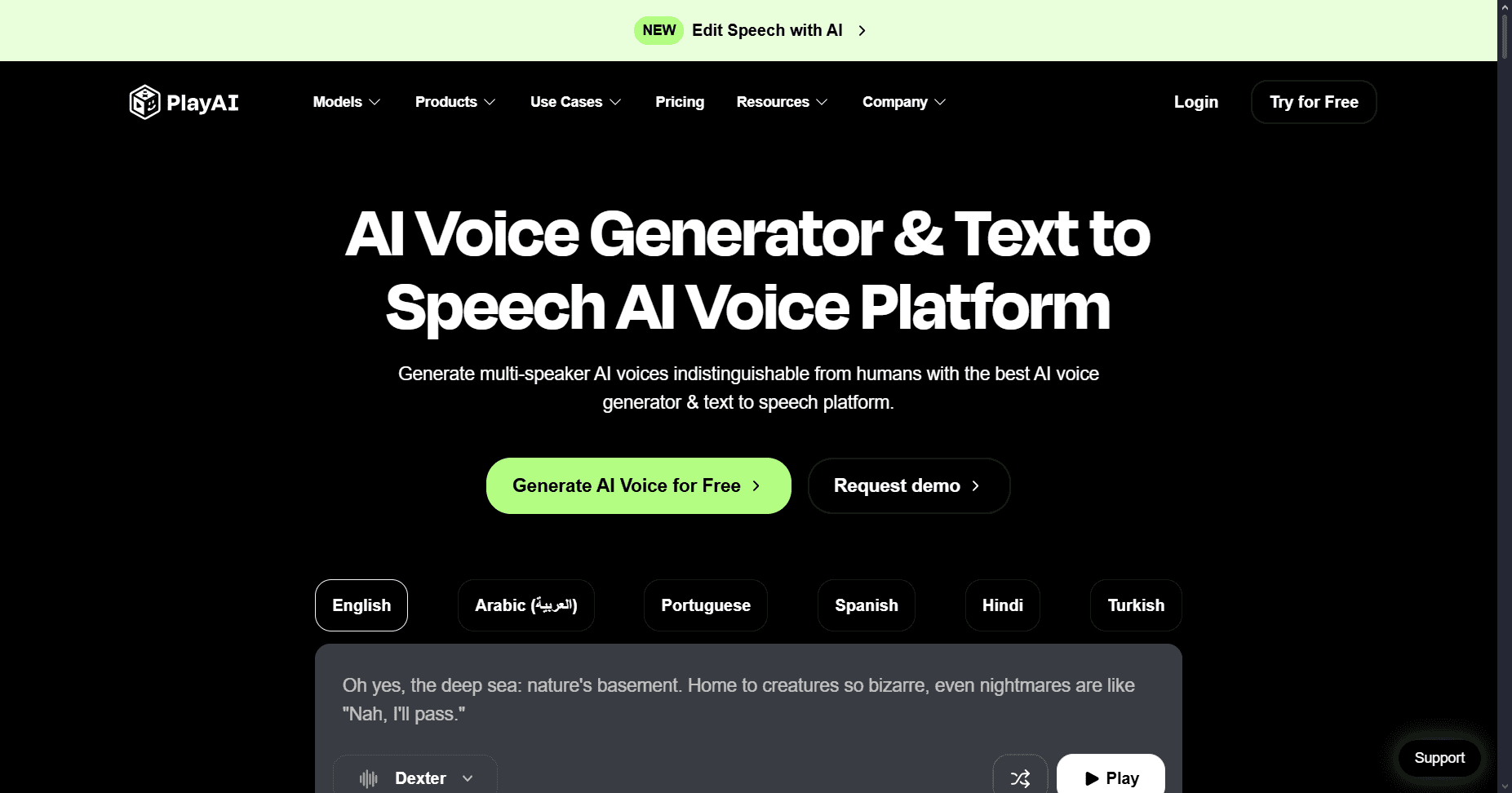
PlayHT Sonic is a lightweight, edge-optimized TTS model designed for developers and enterprises seeking fast, scalable, and flexible voice synthesis for interactive and high-volume applications.
Features:
Edge-optimized: Runs efficiently on local hardware or cloud.
Unlimited characters with flat-rate plans.
Fast streaming responses for real-time applications.
Voice cloning and multi-language support.
API-first platform for easy integration.
Pricing for Each AI Model:
Behind every AI model’s price tag lies a story about value, accessibility, and the choices available to those who use them. How these costs are structured influences not only what’s possible, but who can bring voice technology to life in meaningful ways.
AI Model | Pricing Model | Starting Price | Effective Cost per 1K Characters | Free Tier | Enterprise Options |
|---|---|---|---|---|---|
Smallest.ai Lightning V2 | Per 10K characters | $0.10 per 10K characters | $0.01 | Free plan available | Custom pricing |
ElevenLabs Flash V2.5 | Credit-based | 1 credit per 2 characters | $0.05-$0.15 | 10K credits/month | Custom pricing |
Telnyx Voice AI | Per character | $0.000003-$0.000024 per character | $0.003-$0.024 | No dedicated free tier | Volume discounts |
LOVO Genny | Monthly subscription | N/A | N/A | N/A | Custom pricing |
Deepgram Aura-2 | Per 1K characters | $0.030 per 1K characters | $0.030 | $200 free credits | Contact sales |
PlayHT Sonic | Monthly subscription | $31.20/month (Creator plan) | $0.01 | 1,000 characters/month | Custom pricing |
Businesses see the promise of lightweight AI models for voice not just in the technology itself, but in the organizations that bring those capabilities to market. The real challenge, and opportunity, lies in making these models perform reliably and intelligently right at the edge, where voice interactions happen every day.
Making Small AI Models Work on Edge Devices
Deploying AI models directly on devices, rather than relying on cloud infrastructure, is critical for edge voice applications. It enables faster responses, lower bandwidth usage, and stronger data privacy. But making that possible requires specialized design approaches that optimize models to fit within hardware constraints like limited memory, processing power, or battery life.
Here are the core strategies that make small AI models suitable for real-time voice processing at the edge:
1. Model Compression
What it does: Reduces the model’s size so it fits within the limited memory of edge devices.
How: Techniques like removing unnecessary parts of the model (pruning) or simplifying how numbers are stored (quantization) make models smaller and faster.
Use case: A voice assistant on a smart speaker can answer quickly because the model is small enough to run locally.
2. Quantization
What it does: Converts model data from 32-bit to 8-bit or lower, shrinking the model and speeding up processing.
How: This change allows models to run on devices with less memory and lower power.
Use case: Quantized models can run on microcontrollers like ESP32 or Cortex-M7, enabling real-time voice features in wearables or IoT devices.
3. Knowledge Distillation
What it does: Trains a small model to mimic a larger, more complex model.
How: The small model learns from the big one, keeping accuracy high while using fewer resources.
Use case: A chatbot on a customer kiosk can provide quick, accurate responses without needing cloud access.
4. On-Device Learning
What it does: Allows models to improve directly on the device.
How: Data stays local, and the model updates itself based on new information.
Use case: Healthcare wearables can detect anomalies in vital signs and improve detection over time, all without sending data outside the device.
In real-world applications, these techniques allow edge-deployed AI models to perform critical voice tasks, like wake word detection, command recognition, or even multilingual synthesis, with minimal latency and high reliability.
From smart appliances to autonomous vehicles, lightweight models are powering a growing wave of privacy-preserving, fast-response voice experiences, all without touching the cloud.
Conclusion
Lightweight AI models are redefining what’s possible in voice technology, bringing real-time, private, and intelligent voice interactions directly to edge devices. By reducing reliance on cloud infrastructure, these models not only cut latency and operational costs but also address growing concerns around data privacy and compliance.
From model compression and quantization to on-device learning, the technical foundations of edge AI are already enabling faster, smarter voice systems across industries, from retail kiosks and smart appliances to healthcare devices and industrial controls.
Among the standout solutions, Smallest.ai’s Lightning V2 delivers a unique combination of low-latency performance, multilingual support, voice cloning, and enterprise-grade security, making it a practical and scalable choice for organizations deploying voice at the edge. Request a demo today.
FAQs About Small AI Models for On-Edge Use
Can small AI models be updated directly on edge devices, or do they require redeployment?
Yes, some edge AI solutions support over-the-air updates or differential updates, allowing models to be refreshed without full redeployment, which minimizes downtime and bandwidth use.How do small AI models handle privacy and data security at the edge?
By processing data locally, these models keep sensitive information on the device, reducing exposure to external threats and helping businesses comply with privacy regulations.What happens if an edge device loses connectivity, can it still function?
Edge AI models are designed to operate independently, processing and storing data locally until connectivity is restored, making them ideal for remote or unstable environments.Are there trade-offs between model size and accuracy on edge devices?
While compression techniques like quantization and pruning reduce model size, they may introduce small errors or noise. Careful optimization is needed to balance efficiency with acceptable accuracy for the specific application.Can small AI models be used for training at the edge, or are they limited to inference?
While most edge deployments focus on inference, advances in model compression and hardware are making it possible for some on-device training or continual learning, especially with more compact architectures.
Cloud-based voice AI has enabled everything from virtual assistants to customer support bots, but it’s not always the best fit for real-time, privacy-sensitive, or bandwidth-limited environments. Businesses operating in healthcare, retail, automotive, or IoT increasingly need voice processing to happen locally, directly on devices like kiosks, wearables, or edge servers.
That’s where lightweight AI models for edge deployment come in. These compact, efficient models are designed to run with limited computing power while delivering fast, reliable voice recognition and synthesis, no cloud dependency required.
In this guide, we explore the top small AI models built for edge voice applications. You’ll learn what makes them unique, how they compare, and what to consider when deploying them in real-world environments where speed, security, and efficiency matter most.
Understanding Small AI Models for On-Edge Use
Small AI models for on-edge use are specifically engineered to run directly on devices with limited processing power, memory, or energy resources, rather than requiring data to be sent to cloud servers for analysis. These models are designed with a reduced number of parameters, often under one billion, compared to their cloud-based counterparts, which can have hundreds of billions of parameters.
The architecture of such models focuses on rapid inference with minimal resource consumption. This enables real-time voice recognition, synthesis, or command processing on everyday hardware found in smartphones, smart speakers, or enterprise devices. For example, a small AI model might be trained to recognize spoken commands or generate speech locally, without external connectivity.
Key features of small AI models for on-edge use include:
Local processing: Data remains on the device, supporting privacy and reducing exposure to network vulnerabilities.
Low latency: Voice responses are generated almost instantly, as data does not need to travel to a remote server.
Resource efficiency: Models operate within strict memory and power budgets, making them suitable for mass deployment.
Scalability: These models can be deployed across thousands of devices without exponential increases in infrastructure costs.
In practical terms, small AI models for on-edge use allow enterprises to deploy advanced voice capabilities, such as real-time customer support, voice authentication, or multilingual interactions, directly on their own hardware. This approach supports compliance with data residency laws and reduces ongoing operational expenses.
The drive for smarter, faster voice technology is fueled by a handful of influential companies. These leaders not only push technical boundaries, but also show how businesses can put new capabilities to work.
Key Players in Lightweight AI Models for Voice Applications
Voice technology is no longer the domain of industry giants alone; a new wave of innovators is redefining what’s possible at the edge. These forward-thinking organizations are making advanced voice experiences accessible, practical, and secure, often where others see limitations.
1. Smallest.ai Lightning V2

Source: smallest.ai
Smallest.ai’s Lightning V2 stands out for its compact architecture, rapid deployment, and high-fidelity voice output. The model is engineered to deliver hyper-realistic, multilingual speech at a fraction of the latency and hardware requirements of its competitors, making it suitable for real-time applications in customer service, virtual assistants, and interactive platforms.
Features:
Streaming latency as low as 100ms, enabling real-time voice interactions.
Voice cloning from just 10 seconds of reference audio, supporting unique brand voices and regional localization.
Multilingual support for 16+ languages, with natural inflections and accent customization.
Deep customization options for emotion, age, and accent.
Secure deployment with SOC 2 Type II, HIPAA, and PCI compliance for enterprise use.
2.ElevenLabs Flash V2

ElevenLabs Flash V2 is designed for scenarios demanding swift, natural speech generation. It balances low latency (75ms) with high-quality audio output, making it a strong fit for interactive voice agents, gaming, and live applications.
Features:
Ultra-low latency (75ms) for real-time streaming.
Supports 30+ languages and dialects, maintaining consistent voice characteristics.
API-based deployment for rapid integration into commercial products.
Not open source; access is controlled via licensing.
3. Telnyx Voice AI

Telnyx Voice AI is a commercial solution targeting enterprise-grade conversational automation. It integrates AI-driven voice synthesis with a global private IP network to deliver real-time, human-like voice experiences for customer support and sales automation.
Features:
Real-time, streaming voice synthesis for instant responses.
Combines voice infrastructure, AI automation, and connectivity in a single stack.
Used for automated customer support, intelligent IVR, and outbound engagement.
Commercially licensed, not open source.
4. LOVO Genny

Genny by LOVO is a cloud-based TTS platform focused on high-quality, expressive voice output for content creation, e-learning, and marketing. It supports asynchronous processing and a broad selection of voices and languages, accessible via API.
Features:
Wide range of voices and styles for diverse use cases.
Asynchronous audio generation, suitable for batch content production.
API-driven integration for commercial workflows.
Closed-source, only available via LOVO’s platform.
5. Deepgram Aura-2

Deepgram Aura-2 is a next-generation, enterprise-grade text-to-speech (TTS) model designed specifically for real-time, high-throughput business applications rather than entertainment or offline content.
Features:
Sub-200ms time-to-first-byte (TTFB) for interactive deployments.
40+ curated voices with telephony-tuned prosody.
On-prem or cloud deployment for data residency and compliance.
Integrated with Deepgram’s STT for smooth voice workflows.
Pay-as-you-go pricing with enterprise discounts.
6. PlayHT Sonic

PlayHT Sonic is a lightweight, edge-optimized TTS model designed for developers and enterprises seeking fast, scalable, and flexible voice synthesis for interactive and high-volume applications.
Features:
Edge-optimized: Runs efficiently on local hardware or cloud.
Unlimited characters with flat-rate plans.
Fast streaming responses for real-time applications.
Voice cloning and multi-language support.
API-first platform for easy integration.
Pricing for Each AI Model:
Behind every AI model’s price tag lies a story about value, accessibility, and the choices available to those who use them. How these costs are structured influences not only what’s possible, but who can bring voice technology to life in meaningful ways.
AI Model | Pricing Model | Starting Price | Effective Cost per 1K Characters | Free Tier | Enterprise Options |
|---|---|---|---|---|---|
Smallest.ai Lightning V2 | Per 10K characters | $0.10 per 10K characters | $0.01 | Free plan available | Custom pricing |
ElevenLabs Flash V2.5 | Credit-based | 1 credit per 2 characters | $0.05-$0.15 | 10K credits/month | Custom pricing |
Telnyx Voice AI | Per character | $0.000003-$0.000024 per character | $0.003-$0.024 | No dedicated free tier | Volume discounts |
LOVO Genny | Monthly subscription | N/A | N/A | N/A | Custom pricing |
Deepgram Aura-2 | Per 1K characters | $0.030 per 1K characters | $0.030 | $200 free credits | Contact sales |
PlayHT Sonic | Monthly subscription | $31.20/month (Creator plan) | $0.01 | 1,000 characters/month | Custom pricing |
Businesses see the promise of lightweight AI models for voice not just in the technology itself, but in the organizations that bring those capabilities to market. The real challenge, and opportunity, lies in making these models perform reliably and intelligently right at the edge, where voice interactions happen every day.
Making Small AI Models Work on Edge Devices
Deploying AI models directly on devices, rather than relying on cloud infrastructure, is critical for edge voice applications. It enables faster responses, lower bandwidth usage, and stronger data privacy. But making that possible requires specialized design approaches that optimize models to fit within hardware constraints like limited memory, processing power, or battery life.
Here are the core strategies that make small AI models suitable for real-time voice processing at the edge:
1. Model Compression
What it does: Reduces the model’s size so it fits within the limited memory of edge devices.
How: Techniques like removing unnecessary parts of the model (pruning) or simplifying how numbers are stored (quantization) make models smaller and faster.
Use case: A voice assistant on a smart speaker can answer quickly because the model is small enough to run locally.
2. Quantization
What it does: Converts model data from 32-bit to 8-bit or lower, shrinking the model and speeding up processing.
How: This change allows models to run on devices with less memory and lower power.
Use case: Quantized models can run on microcontrollers like ESP32 or Cortex-M7, enabling real-time voice features in wearables or IoT devices.
3. Knowledge Distillation
What it does: Trains a small model to mimic a larger, more complex model.
How: The small model learns from the big one, keeping accuracy high while using fewer resources.
Use case: A chatbot on a customer kiosk can provide quick, accurate responses without needing cloud access.
4. On-Device Learning
What it does: Allows models to improve directly on the device.
How: Data stays local, and the model updates itself based on new information.
Use case: Healthcare wearables can detect anomalies in vital signs and improve detection over time, all without sending data outside the device.
In real-world applications, these techniques allow edge-deployed AI models to perform critical voice tasks, like wake word detection, command recognition, or even multilingual synthesis, with minimal latency and high reliability.
From smart appliances to autonomous vehicles, lightweight models are powering a growing wave of privacy-preserving, fast-response voice experiences, all without touching the cloud.
Conclusion
Lightweight AI models are redefining what’s possible in voice technology, bringing real-time, private, and intelligent voice interactions directly to edge devices. By reducing reliance on cloud infrastructure, these models not only cut latency and operational costs but also address growing concerns around data privacy and compliance.
From model compression and quantization to on-device learning, the technical foundations of edge AI are already enabling faster, smarter voice systems across industries, from retail kiosks and smart appliances to healthcare devices and industrial controls.
Among the standout solutions, Smallest.ai’s Lightning V2 delivers a unique combination of low-latency performance, multilingual support, voice cloning, and enterprise-grade security, making it a practical and scalable choice for organizations deploying voice at the edge. Request a demo today.
FAQs About Small AI Models for On-Edge Use
Can small AI models be updated directly on edge devices, or do they require redeployment?
Yes, some edge AI solutions support over-the-air updates or differential updates, allowing models to be refreshed without full redeployment, which minimizes downtime and bandwidth use.How do small AI models handle privacy and data security at the edge?
By processing data locally, these models keep sensitive information on the device, reducing exposure to external threats and helping businesses comply with privacy regulations.What happens if an edge device loses connectivity, can it still function?
Edge AI models are designed to operate independently, processing and storing data locally until connectivity is restored, making them ideal for remote or unstable environments.Are there trade-offs between model size and accuracy on edge devices?
While compression techniques like quantization and pruning reduce model size, they may introduce small errors or noise. Careful optimization is needed to balance efficiency with acceptable accuracy for the specific application.Can small AI models be used for training at the edge, or are they limited to inference?
While most edge deployments focus on inference, advances in model compression and hardware are making it possible for some on-device training or continual learning, especially with more compact architectures.
Related Blogs
Lead with Precision, Speak with Purpose: What Smallest.ai Shares with Emmanuel Macron
Nov 25, 2025
Conversational AI in Customer Service: 4 Use Cases And Steps
Dec 18, 2025
The Future of AI in Customer Service: What Comes Next
Dec 18, 2025
9 Ways Contact Center AI Is Changing Customer Calls Forever
Dec 18, 2025
How Generative AI in Financial Services is Defining 2025 ROI
Dec 18, 2025


